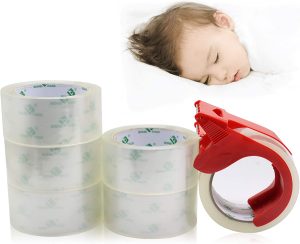Taping for painting is a crucial step to achieve clean and crisp lines, especially when you’re working on edges and corners. Here’s a step-by-step guide to taping for painting:
Materials Needed:
- Painter’s tape
- Paint
- Paintbrushes or rollers
- Drop cloths or plastic sheets (to protect surfaces)
- Putty knife (optional, for better adhesion)
Step-by-Step Guide:
1. Gather Supplies and Prepare the Area:
- Make sure you have all your painting supplies ready, including the painter’s tape, paint, brushes or rollers, and protective materials like drop cloths or plastic sheets.
2. Clean the Surface:
- Ensure that the surface you’re going to paint is clean and free of dust, grease, or debris. Use a mild detergent and water to clean if necessary. Let it dry completely before proceeding.
3. Choose the Right Painter’s Tape:
- Select a high-quality painter’s tape that is appropriate for your surface type and the duration you plan to leave it in place. Most painter’s tapes are designed for clean removal within a specific time frame.
4. Test a Small Area:
- Test the painter’s tape on a small, inconspicuous area of the surface to ensure it adheres well without damaging the paint or leaving residue.
5. Plan Your Taping:
- Decide which areas you need to tape off. This might include edges, corners, trim, or other surfaces that you want to keep paint-free.
6. Apply the Painter’s Tape:
- Start by applying the painter’s tape along the edge you want to protect. Press down the tape firmly, making sure it’s flat and evenly adhered. Use your fingers or a putty knife to smooth out any bubbles or wrinkles.
7. Overlapping Corners:
- When taping corners, overlap the tape slightly to ensure complete coverage and prevent paint from bleeding through.
8. Create a Secure Seal:
- To prevent paint from seeping under the tape, use a putty knife or your fingernail to press down the edge of the tape where it meets the surface. This helps create a tight seal.
9. Paint Along the Edges:
- Start painting the larger areas using your paintbrush or roller, working away from the taped edge. This reduces the risk of accidentally brushing paint onto the tape.
10. Remove Tape While Paint is Wet:
- Once you’ve painted the larger areas, carefully remove the painter’s tape while the paint is still wet. Pull the tape back on itself at a low angle to prevent lifting fresh paint. This will reveal a clean and sharp edge.
11. Let Dry and Touch Up:
- Allow the painted surface to dry completely before doing any touch-ups or adding additional coats of paint.
12. Clean Up:
- Dispose of the used painter’s tape properly and clean your brushes, rollers, and any other painting equipment.
13. Inspect and Finish:
- After the paint has dried, inspect the edges to ensure they are clean and well-defined. Make any necessary touch-ups using a small paintbrush.
By following these steps and taking your time to apply the painter’s tape correctly, you’ll be able to achieve professional-looking results with clean and sharp paint lines. Remember that practice makes perfect, so don’t be discouraged if your first attempt isn’t perfect. Over time, you’ll improve your taping and painting skills.






















